|
Wetland and Aquatic Plants
of
Oklahoma
Interactive Keys: Emergent
White Flowers
1.
Flower with 3 petals
a. Alisma spp.
b. Sagittaria spp.
c. Echinodorus spp.
Water plantains (Alismataceae)
Water
plantain (Alisma subcordatum Raf.)
Native perennial.
click on thumbail to enlarge
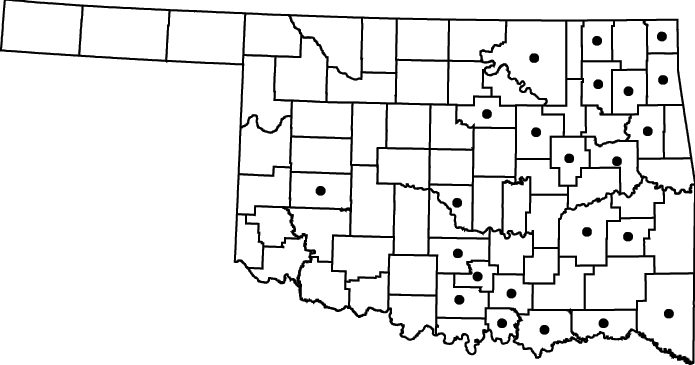
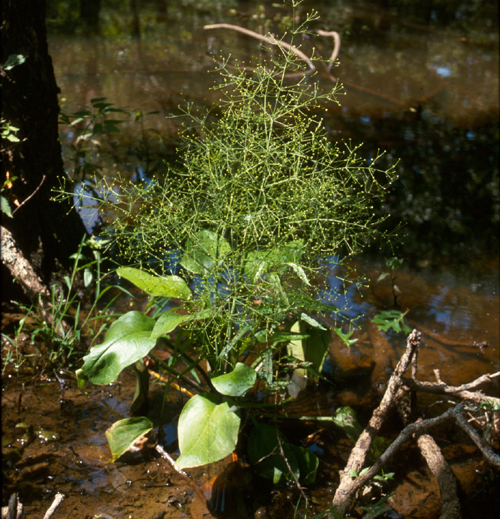
Note: Unlike other species in this family,
water-plantain
has a profuse number of small flowers in wispy panicles.
The seeds (achenes) and roots are eaten by
numerous bird species. The Cherokee
prepared a poultice to treat sores, wounds and bruises.
The root was also used to treat bowel
troubles.
NWI status:
OBL.
Duck potatoes
or arrowheads (Sagittaria spp.)
Note: The seeds (achenes) of these species are
eaten by
numerous bird species. One quarter of
North American arrowheads produce a starchy tuber which is eaten by
waterfowl,
muskrats, and beaver will eat the tubers. Native
Americans and white settlers also ate the
tuber. However, the milky sap of the tuber
is
bitter, but can be neutralized by boiling. All
species are native perennials.
NWI status:
All arrowheads are designated as OBL.
Plants
with broadleaves resembling arrowheads
Shortbeak
arrowhead (Sagittaria
brevirostra Mackenzie
& Bush)
Native
perennial.
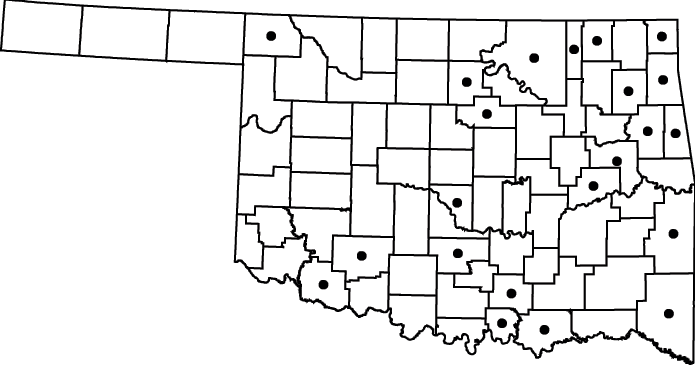
Arumleaf
arrowhead (Sagittaria cuneata Sheldon)
Native perennial.
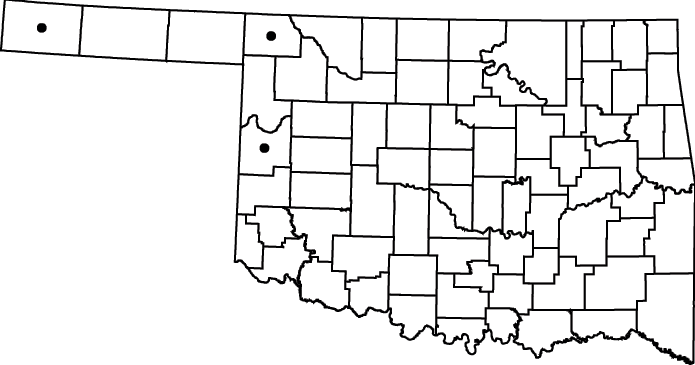
Note:
The prepared tuber was often mixed into Cheyenne medicinal
preparations.
Duck
potato (Sagittaria latifolia
Willd.)
Native perennial.
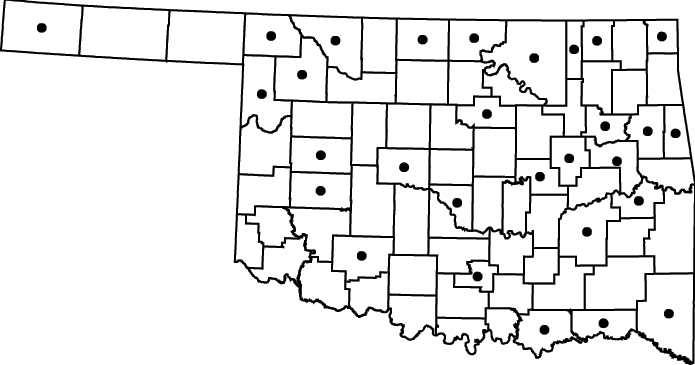
Narrowleaf
duck potato (Sagittaria longiloba
Engelm. ex J.G. Sm.)
Native perennial.
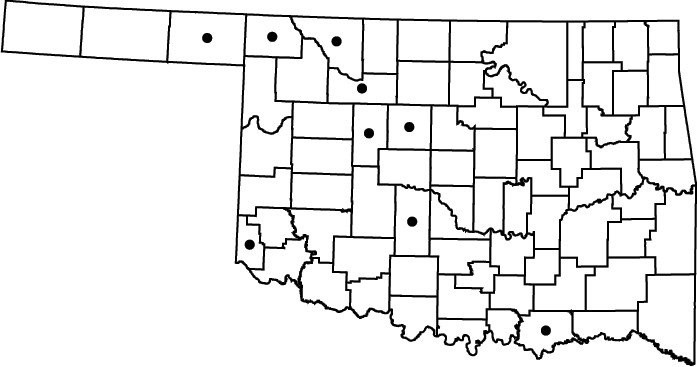
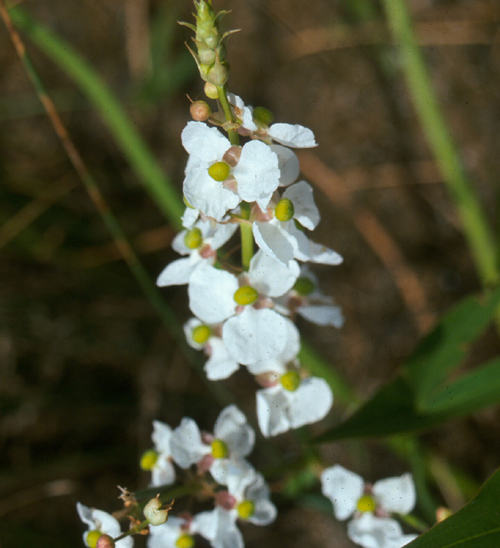
Note:
This attractive species can be easily identified by the long tapering
lobes on
the leaves.
Plants with oval or
strap-like leaves
Kansas
arrowhead (Sagittaria
ambigua J.G. Sm.)
Native perennial.
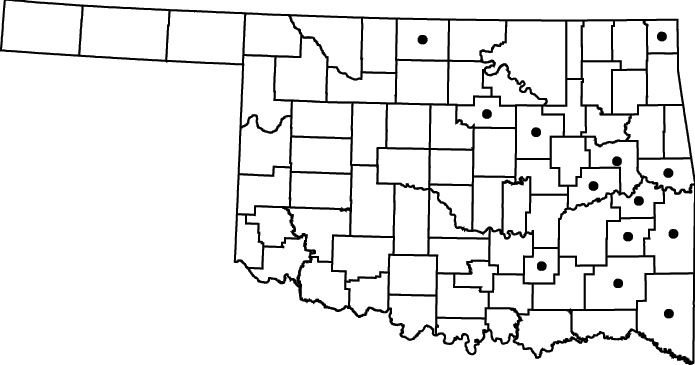
Note:
The flower stalk (pedicel) of this species is ascending.
Look for scattered, small protuberances
(papillae) on the leaf-like structures (bracts) at the base of the
flower
stalks (pedicels).
Grassy
arrowhead (Sagittaria graminea
Michx.)
Native perennial.
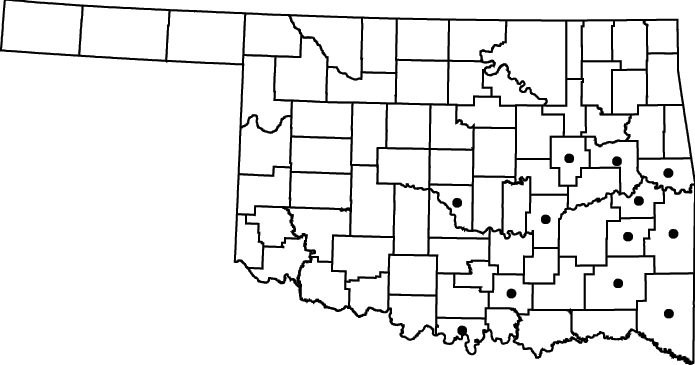
Note:
The flower stalk (pedicel) of this species is ascending.
Bulltongue
arrowhead (Sagittaria lancifolia
L.)
Native perennial.
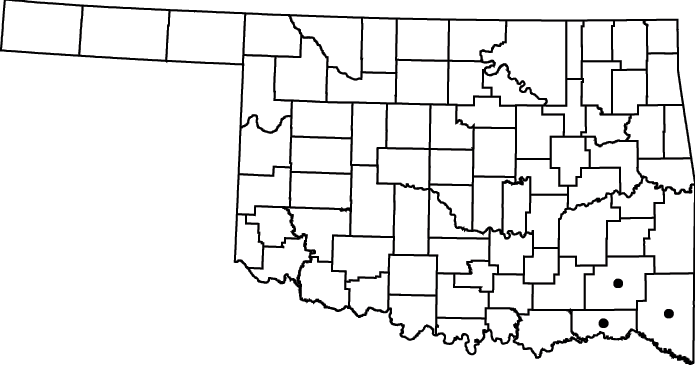
Note:
The flower stalk (pedicel) of this species is ascending.
Delta
arrowhead (Sagittaria platyphylla (Engelm.)
J.G. Sm.)
Native perennial.
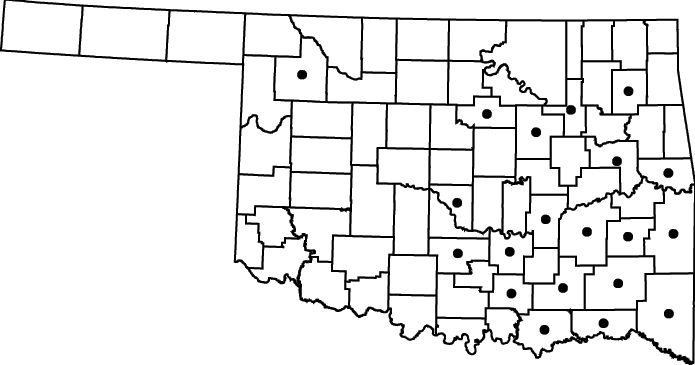
Note:
The flower stalks (pedicel) of this species are curved downward
(reflexed).
Nipplebract
arrowhead (Sagittaria
papillosa Buch.)
Native perennial.
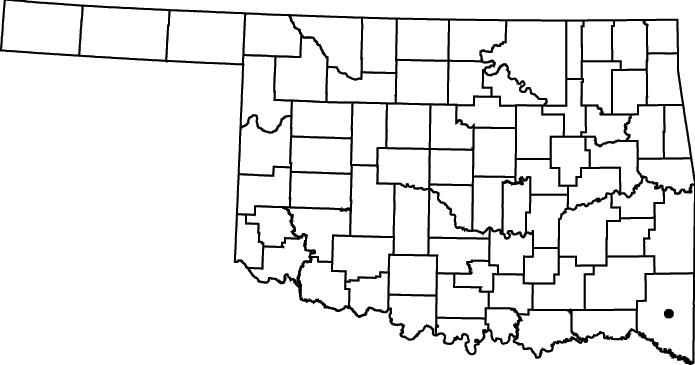
Note:
leaves are narrow and taper to the tip. The
flower stalk (pedicel) of this species is
ascending. The leaf-like structures
(bracts) at the
base of the flower stalks (pedicels) are densely covered with small
protuberances (papillae).
Burheads (Echinodorus
spp.)
Note: The seeds (achenes) are eaten by numerous
bird
species.
NWI status: All
burheads are designated as OBL.
Upright
burrhead (Echinodorus
berteroi (Spreng.) Fassett )
Native
perennial.
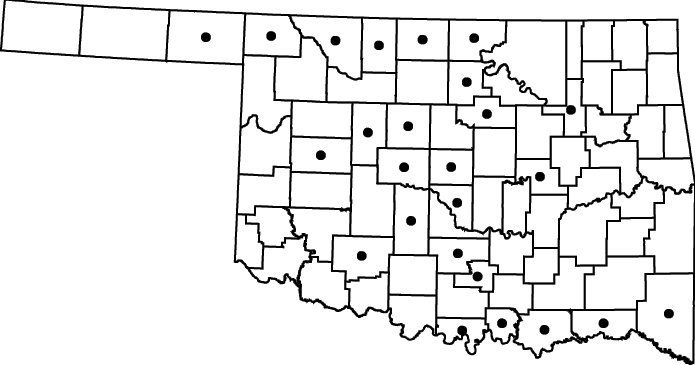
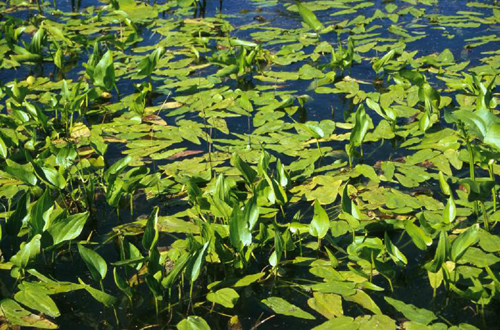
Note:
Plants are sold in the aquarium trade.
Creeping
burhead (Echinodorus cordifolius
(L.) Griseb.)
Native perennial
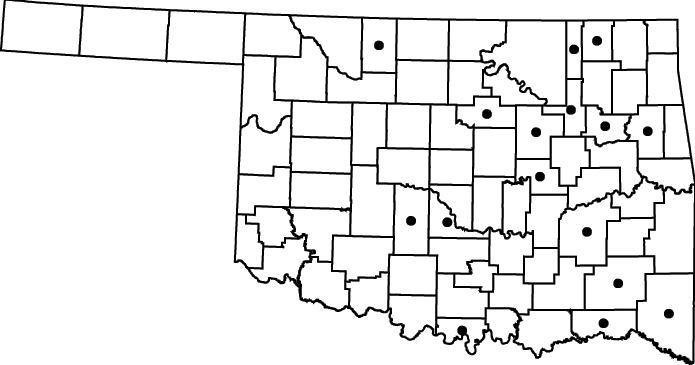
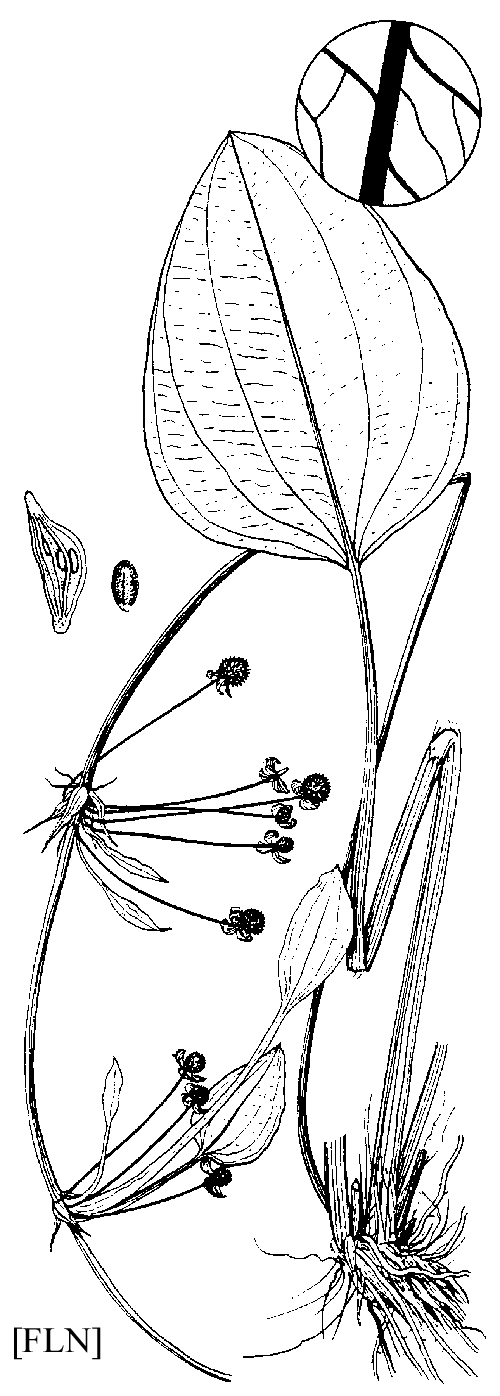
Note:
The flowering-stalks (scape) are arching and, when in contact with the
soil,
will root and form new plants.
Lanceleaf
burrhead (Echinodorus tenellus
(Mart.) Buch.)
Native perennial.
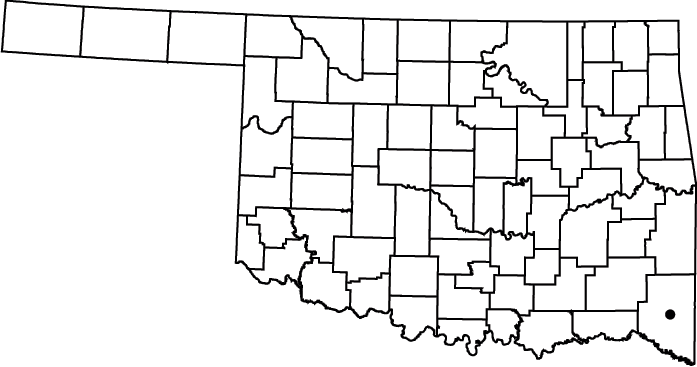
Note: A
very small plant with a restricted distribution in Oklahoma.
Last update: 2/10/04
Comments to : Bruce Hoagland
bhoagland@ou.edu
Go to Oklahoma
Biological Survey Home Page
 Disclaimer Disclaimer
|

